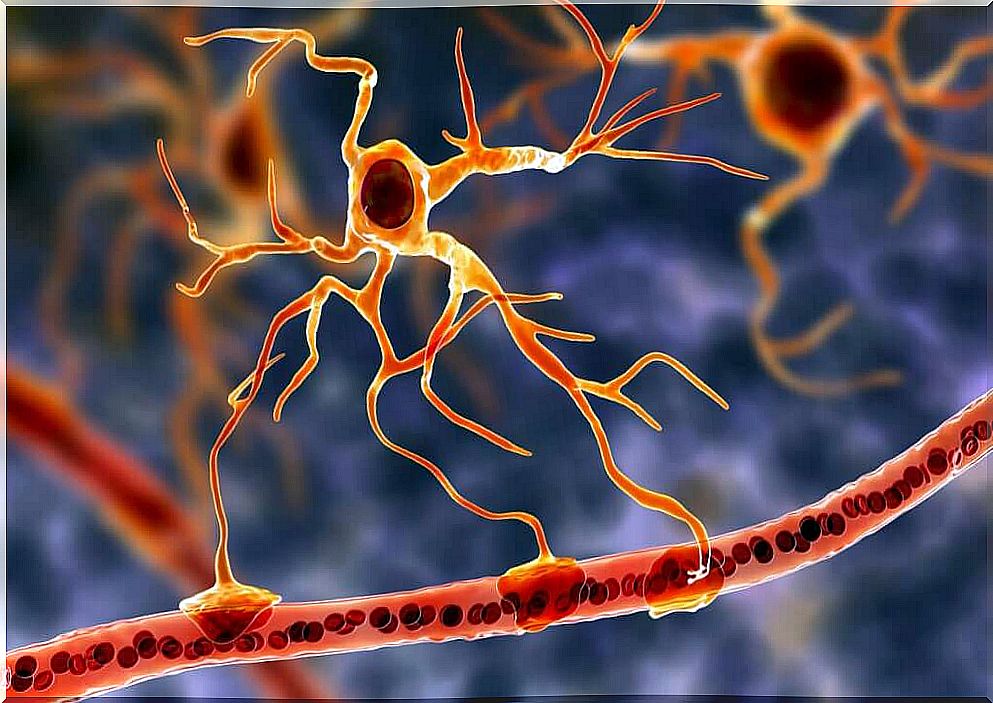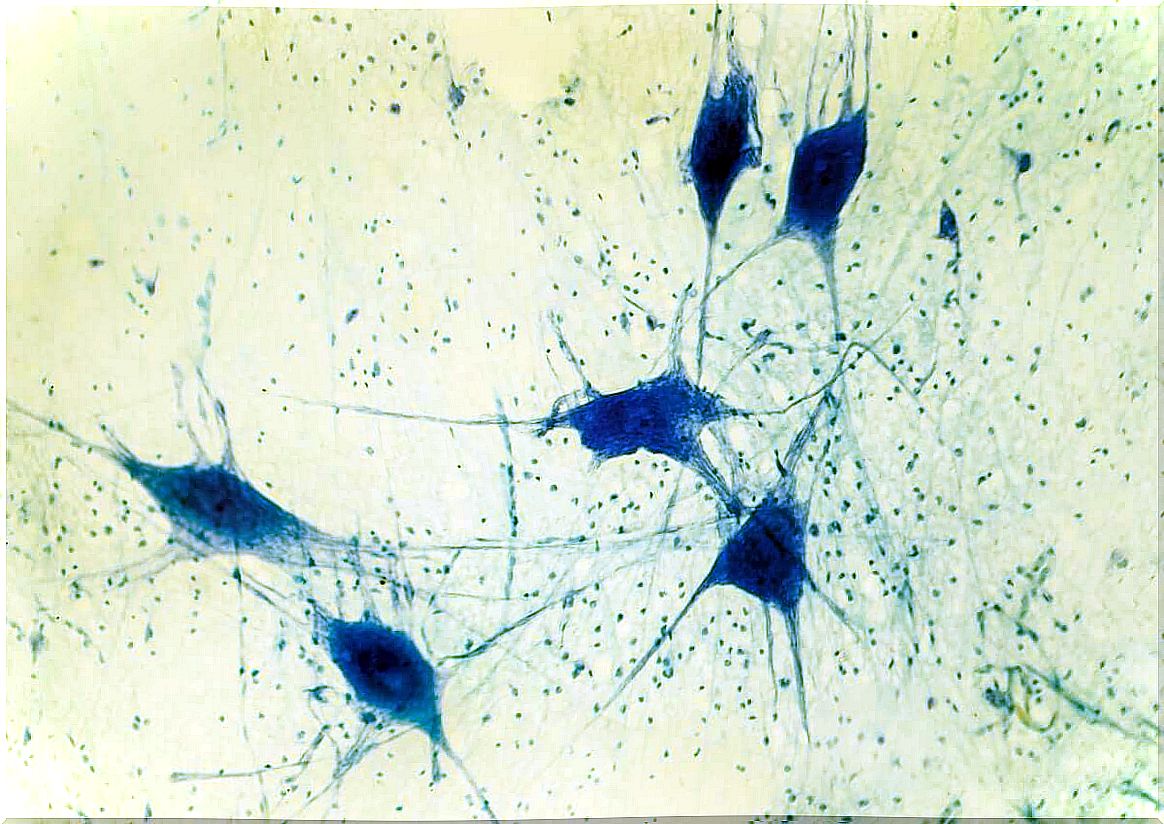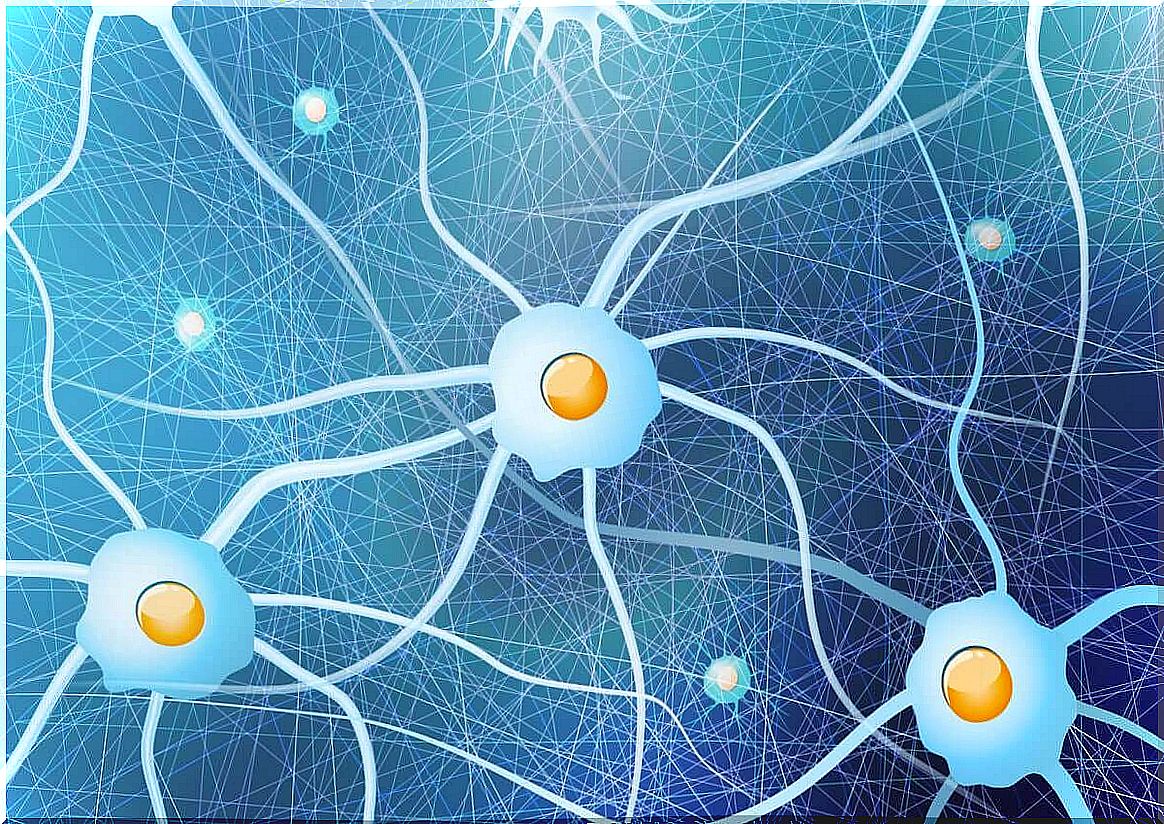Glial Cells: The Functional Basis Of The Brain

The brain is one of the most important organs in the body. Thanks to him we can speak, move, feel and think. Due to the importance it has taken on nowadays, much of the research has focused on knowing its composition and functionality. At first, neurons were considered cells responsible for the development of activities circumscribed to the brain itself, but new experiments highlighted the role that glial cells play, allowing us to carry out different tasks.
Glial cells are fundamental in the process of transmitting information. It has been found that some of the major brain diseases are not only related to neuron problems, but also affect glial cells.

What are glial cells?
To understand the importance of these small cells, let’s give an example. On many occasions, an attempt was made to keep the neurons isolated in culture dishes, but they died within days. Later, they found that if an extract of glial cells were added to the culture medium, they could control the death or survival of neurons. This highlighted the importance of glial cells in neuron survival.
Furthermore, it was discovered that we have a large number of glial cells or neuroglia. The name comes from the word “glia”, which comes from the Greek and means ‘glue’, and ‘neuro’, a term related to the brain. Therefore, it can be known as the brain glue.
Traditionally, glial cells have been considered to have a very passive role in the brain, being merely a metabolic, structural and trophic support for neurons. However, it has now been found that they have much more functions in various processes, facilitating the work of other types of neurons.
Glial cell functions
Glia cells have multiple functions. Among them, we find the following:
- Insulating. Glial cells produce a substance called myelin, which is essential for isolating neurons. The purpose of this density is to cover the axons, fulfilling the function of protecting the cell and, thus, favoring the transmission of information quickly and efficiently. It also helps prevent neural messages from getting mixed up. Furthermore, it contributes to the consolidation of learning. It was found that when learning increases, the amount of myelin increases.
- Source of nutrients. As we know, neurons in the brain consume a fair amount of energy, and although the same neurons have some nutrient reserves, they are not enough to maintain brain activity for more than a few minutes. In this sense, glial cells help provide nutrients and energy that neurons lack. They do this by incorporating energy molecules such as glucose that they get from the blood.
- Cleaning. In this case, the glial cells help to remove waste products related to neuronal function. They do this in two ways: first, they can remove some of the neurotransmitters that remain in the synaptic space, then transform and return them to the parent neuron so that it becomes the raw material for new neurotransmitters. Second, they are responsible for removing the remains of dead neurons. This is especially emphasized when there is damage to the nervous system. Likewise, this cleaning helps to reduce the chemical and physical effects that these residues can generate.
- Synapse potentiation. The presence of these cells helps in the release of thrombospondin, which facilitates the synapse, enhancing synaptic activity.
Types of Glial Cells
For the fulfillment of all the functions they perform, there are different types of glial cells. Each has an important role in the proper functioning of neurons and therefore the brain.
There are different divisions in the classification of glial cells, one of which is location within the nervous system. This is what we will take into account to explain each of the types.
central nervous system
First, there are astrocytes; they are part of the macroglia (due to their size) and are star-shaped. These are the most abundant glial cells in the brain. As for location, we find them around synaptic junctions.
One of its main functions is to define cell boundaries, contributing to the formation of a defensive barrier for the brain. They also control synapse formation and functionality, neurogenesis, and regulation of muscle tone. On the other hand, they help fulfill the function of giving nutrients to neurons.
Second, there are oligodendrocytes. They are part of the central nervous system macroglia. They are related to the insulating capacity they confer on the cell, as they supply myelin to the axon. These cells have the ability to myelinate more than one neuron and, in some cases, can help to regenerate the damaged axon through this substance.
Finally, there are the parts of the microglia, which help with cleaning related to neuronal function. They also respond when there is damage to the system, clearing cell debris and triggering the inflammatory response.

Peripheral Nervous System
Schwann cells, which are part of the macroglia, take center stage in this part of the nervous system. These glial cells are divided into three subtypes. The first is the type that forms myelin. As its name implies, it helps to myelinate axons, having the ability to do this with only one axon at a time. When there is brain damage, they perform the cleaning function and favor the conditions for regeneration.
Second, there are Schwann cells that do not form myelin. The nature of these cells’ communication with axons is currently unknown. Even so, it was found that they are necessary for the functioning and maintenance of unmyelinated axons, essential to generate the sensation of pain.
Thirdly, there are the polysynaptic Schwann cells. These glial cells cover neuromuscular junctions, releasing neurotransmitters and peptides. In their membrane, they have receptors to generate signals for these substances. They also have the ability to control and improve synapses.
As we saw earlier, glial cells are a fundamental part of the nervous system. They not only support cells, but help with activities such as synapses, cleansing and nutrient generation. Therefore, they will have an important influence on the development of some diseases, such as multiple sclerosis.









